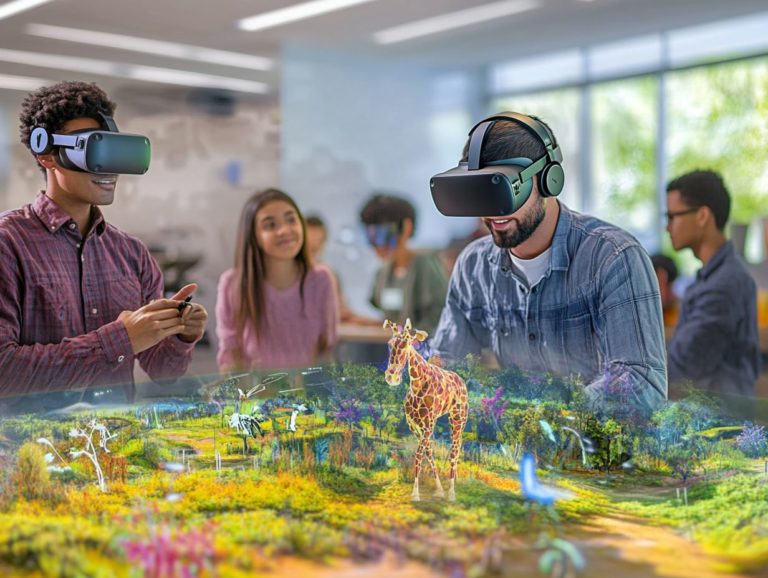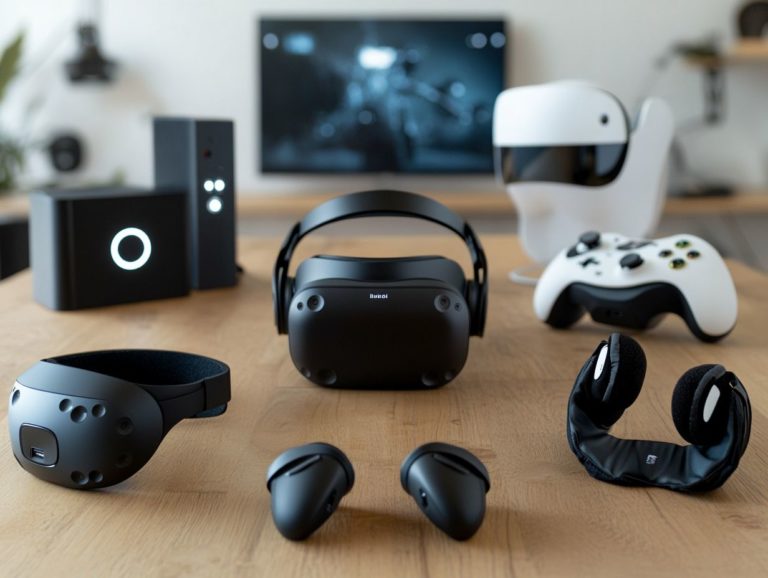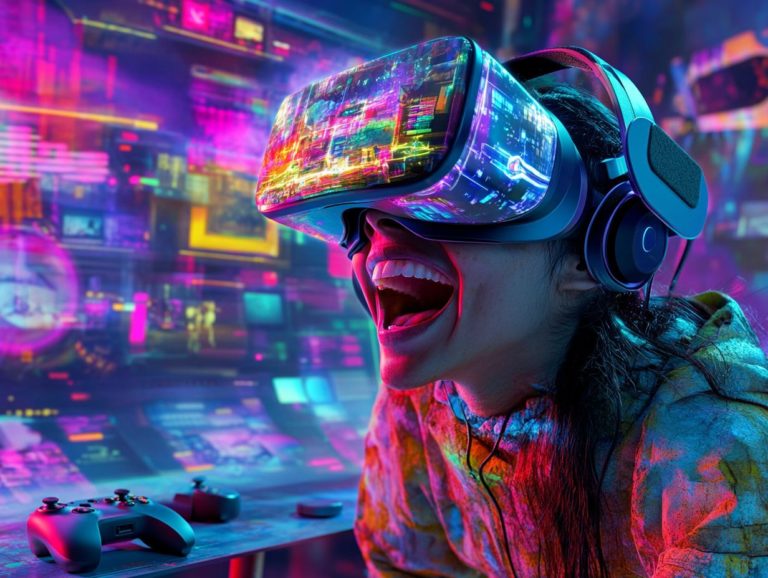understanding vr controllers: a comprehensive guide
Virtual Reality (VR) has revolutionized our interaction with digital environments, and at the core of this immersive experience are VR controllers.
These remarkable devices empower users to engage with virtual worlds, enhancing both gameplay and overall experiences. This article delves into the various types of VR controllers, examining their features, compatibility, and effective usage tips.
Whether you re a seasoned VR enthusiast or just stepping into this exciting realm, this guide will assist you in selecting the perfect controller to elevate your virtual adventures to new heights.
Contents
Key Takeaways:
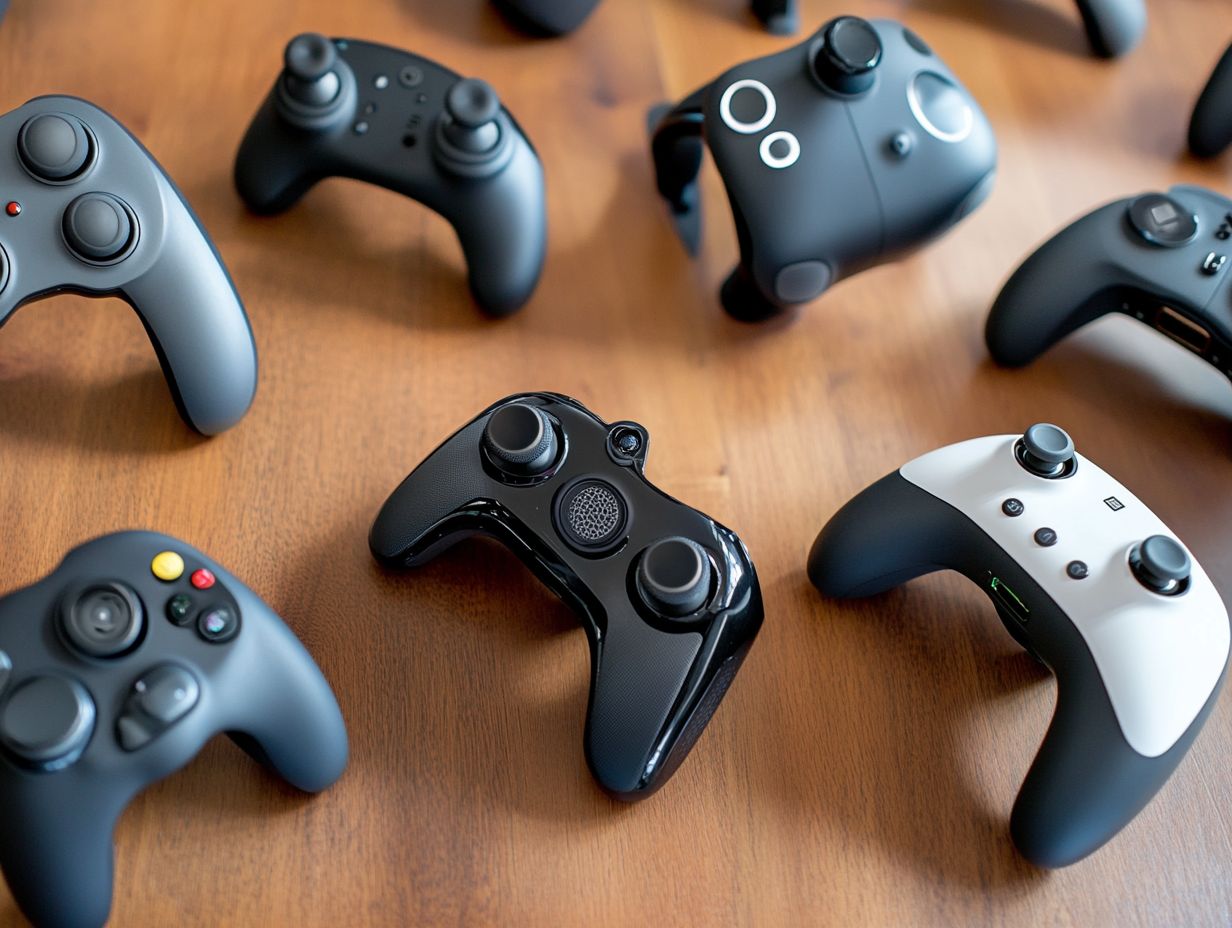
Here s what you need to know about VR controllers to supercharge your experience: VR controllers come in different types, such as handheld and hand tracking, with unique features and functions like motion tracking and buttons/triggers. They are compatible with various VR platforms and can be connected wired or wirelessly. Knowing how to use VR controllers, including advanced functions and tips, can enhance your virtual reality experience. Consider your needs and preferences when choosing the right controllers for you.
What are VR Controllers?
VR controllers are your ticket to seamless interaction within Virtual Reality environments, designed specifically for you to navigate and manipulate virtual objects with ease.
These devices connect your physical and digital worlds, transforming your experience into something not just enjoyable but profoundly immersive.
With advanced motion tracking, these controllers respond to your movements in real time, delivering an unparalleled sense of presence that makes you feel like you truly belong in the virtual realm.
Their ergonomic design ensures a comfortable fit in your hands, minimizing fatigue even during those marathon gaming sessions.
Features like adaptive triggers and sensory feedback facilitate nuanced interactions, elevating the realism of your gameplay and social experiences. Whether you re dodging an obstacle or crafting an item, these controllers unlock the full potential of VR technology.
Types of VR Controllers
The two primary types of VR controllers are handheld controllers and hand tracking controllers, each carefully designed to enhance your interaction within virtual environments.
Handheld controllers, such as those paired with the Meta Quest 3, provide a classic VR gaming experience, boasting a well-designed button layout and haptic feedback that delivers a satisfying tactile sensation.
In contrast, hand tracking controllers use advanced tracking technology, enabling you to engage with the virtual world using your natural movements no physical device required. This offers a uniquely immersive and intuitive way to interact with your games.
Handheld Controllers
Handheld controllers, like those that accompany the Meta Quest 3, are essential gaming accessories that allow you to engage with virtual environments in a profoundly tactile manner. These controllers are crafted with an ergonomic design that prioritizes your comfort during extended gameplay, featuring responsive buttons and haptic feedback that mimic real-world sensations, enhancing your interaction with the game.
The strategically placed buttons make it effortless for you to navigate menus and interact with virtual objects, transforming your VR experience into something genuinely enjoyable and immersive.
Their design considers not only the ergonomic shape that fits snugly in your hands but also the diverse capabilities that adapt seamlessly to different VR systems. Compatibility is crucial, as these controllers work together with a wide range of platforms, ensuring you have access to a broader spectrum of experiences.
The advanced haptic feedback technology enriches your interactions by allowing you to feel immersive sensations that correspond to in-game actions, significantly heightening your sense of presence in virtual realms. This level of detail enhances your gameplay and instills confidence in your interactions, forging a vital connection between you and the expansive digital landscapes you explore.
Hand Tracking Controllers
Hand tracking controllers represent an exciting new development in VR technology. They allow you to immerse yourself in the virtual world using your hands no cumbersome handheld device required. By leveraging advanced tracking technology, these controllers capture your real-world movements and translate them into interactive experiences within virtual environments. This creates an unparalleled level of immersion that enhances your engagement.
This innovation elevates your interactions in VR, offering a more intuitive way to manipulate virtual objects and navigate immersive experiences. Unlike traditional handheld controllers, which often confine you to rigid button presses and joystick movements, hand tracking systems create a fluid interface. You can use natural gestures like pinching, swiping, and pointing to interact with your virtual surroundings.
This effortless interaction significantly enhances your experiences in gaming, training simulations, and virtual meetings, where realistic hand movements foster collaboration and learning. For instance, in educational VR scenarios, you can assemble machinery or conduct scientific experiments, making learning not just more tangible but also far more engaging.
Hand tracking controllers create a truly immersive and user-friendly virtual experience.
Features and Functions of VR Controllers
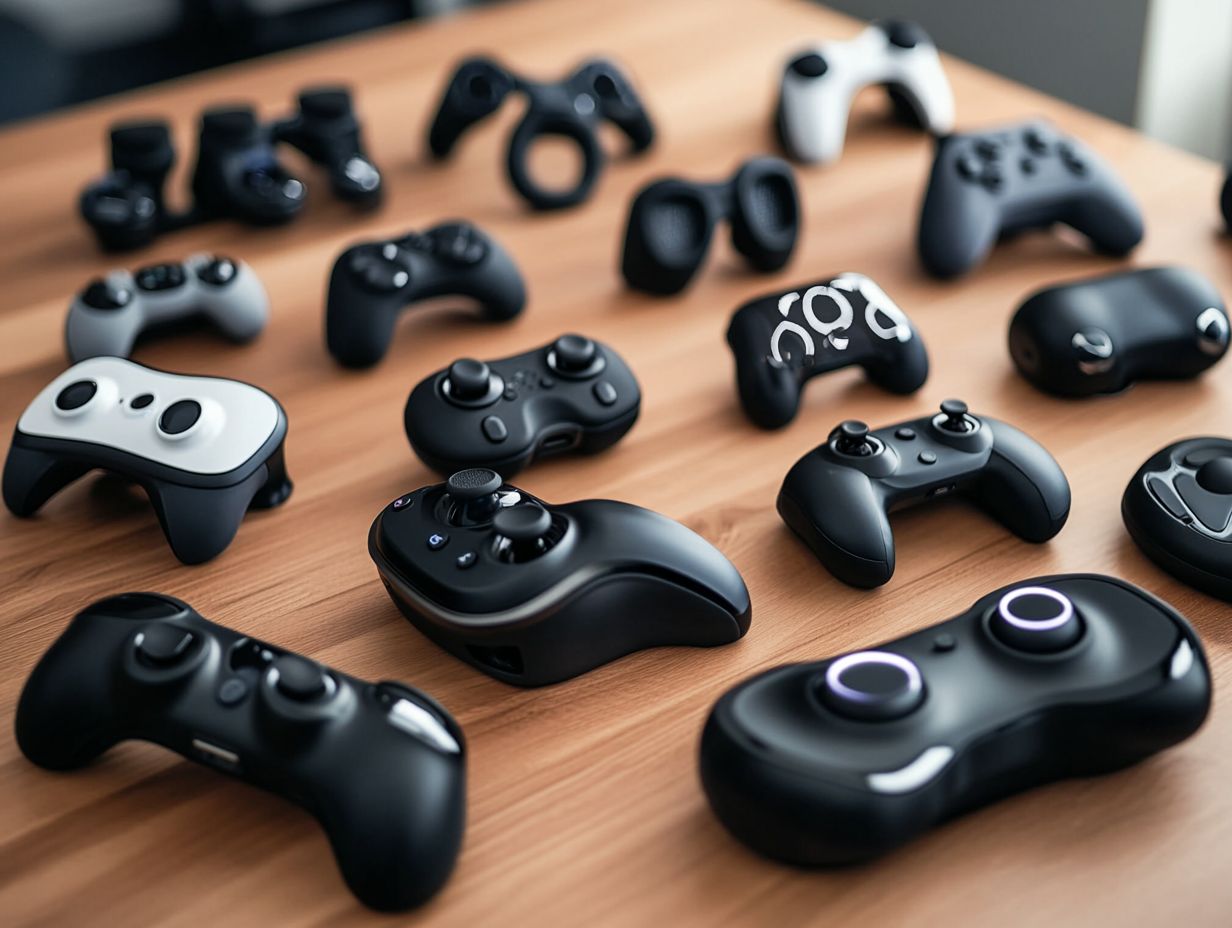
VR controllers come packed with features designed to elevate your interaction and overall experience. With advanced motion tracking, responsive buttons and triggers, and immersive haptic feedback that gives you physical sensations mimicking real-life interactions, these controllers enhance your virtual journey.
The motion tracking technology captures your hand movements with remarkable precision, seamlessly translating them into the virtual environment for an engaging experience. Additionally, the carefully designed button layout ensures that your gameplay is not only comfortable but also accessible, making it easy for you to navigate through captivating game interactions.
Motion Tracking
Motion tracking is essential for VR controllers. It employs advanced technology to transform your real-world movements into the virtual realm. This sophisticated tracking ensures accuracy, allowing for a seamless and immersive experience where you can engage with virtual objects as naturally as you do in reality.
By precisely capturing your hand and body movements, motion tracking elevates the performance of VR controllers, making them crucial for engaging gameplay. You can see the power of this feature in applications like Beat Saber, where you slice through blocks in rhythm with the music, creating an immediate connection with your actions.
In simulation-based experiences, such as VR fitness games, motion tracking goes beyond just monitoring movements; it also provides vital feedback on your form and effort, enhancing your workout routine. This level of interaction fosters a richer user experience, bridging the gap between the physical and digital worlds. You ll feel like you re truly stepping into the action!
Buttons and Triggers
The buttons and triggers on VR controllers are meticulously crafted for a comfortable and responsive gameplay experience. The button layout is strategically designed for easy access, enabling you to execute commands seamlessly during gameplay. With haptic feedback enriching this experience, you ll enjoy tactile sensations that simulate real-world interactions.
This smart design makes it easy to jump right into the action! It minimizes the learning curve for newcomers, making your transition from traditional gaming controllers to VR feel intuitive. Unlike conventional controllers that rely on rigid feedback mechanisms, VR controllers harness advanced technology to deliver nuanced vibrations and sensations.
These features create an immersive environment that mirrors the physicality of your actions, heightening your emotional responses during gameplay. When you can physically feel your actions within the virtual space, your overall satisfaction and connection to the game intensifies, fundamentally transforming how you engage with digital experiences.
Compatibility and Connectivity
When selecting VR controllers, it’s essential to consider compatibility and connectivity. These elements dictate how effectively the controllers work with various VR platforms and devices.
The evolution of wireless connection technology has been remarkable. VR controllers can connect effortlessly to headsets without the hassle of cumbersome cables. This advancement enhances your freedom and movement while immersed in virtual worlds.
By understanding the details of device compatibility, you can fully harness the advanced features of your VR controllers. This elevates your gaming experience and makes it immersive and enjoyable.
Compatible VR Platforms
Know how your VR controllers work with different platforms to get the most out of your experience! Compatible VR platforms are essential for ensuring that your VR controllers function optimally with headsets like the Meta Quest 3 and Oculus systems.
Each platform may require specific controllers to leverage features like motion tracking, the ability to feel vibrations, and button responsiveness. Therefore, device compatibility is a crucial consideration for a seamless VR experience.
Explore various VR platforms to appreciate the nuances in compatibility. This includes differences between SteamVR, PlayStation VR, and Windows Mixed Reality. Each ecosystem comes with its own set of compatible controllers, directly influencing how you interact with virtual environments.
For instance, a headset designed for high fidelity might offer limited capabilities if paired with an incompatible controller. Invest time to ensure your selected controller aligns with your headset. This not only enhances functionality but also enriches your enjoyment, allowing you to dive deeper into the captivating worlds of virtual reality.
Wired vs Wireless Controllers
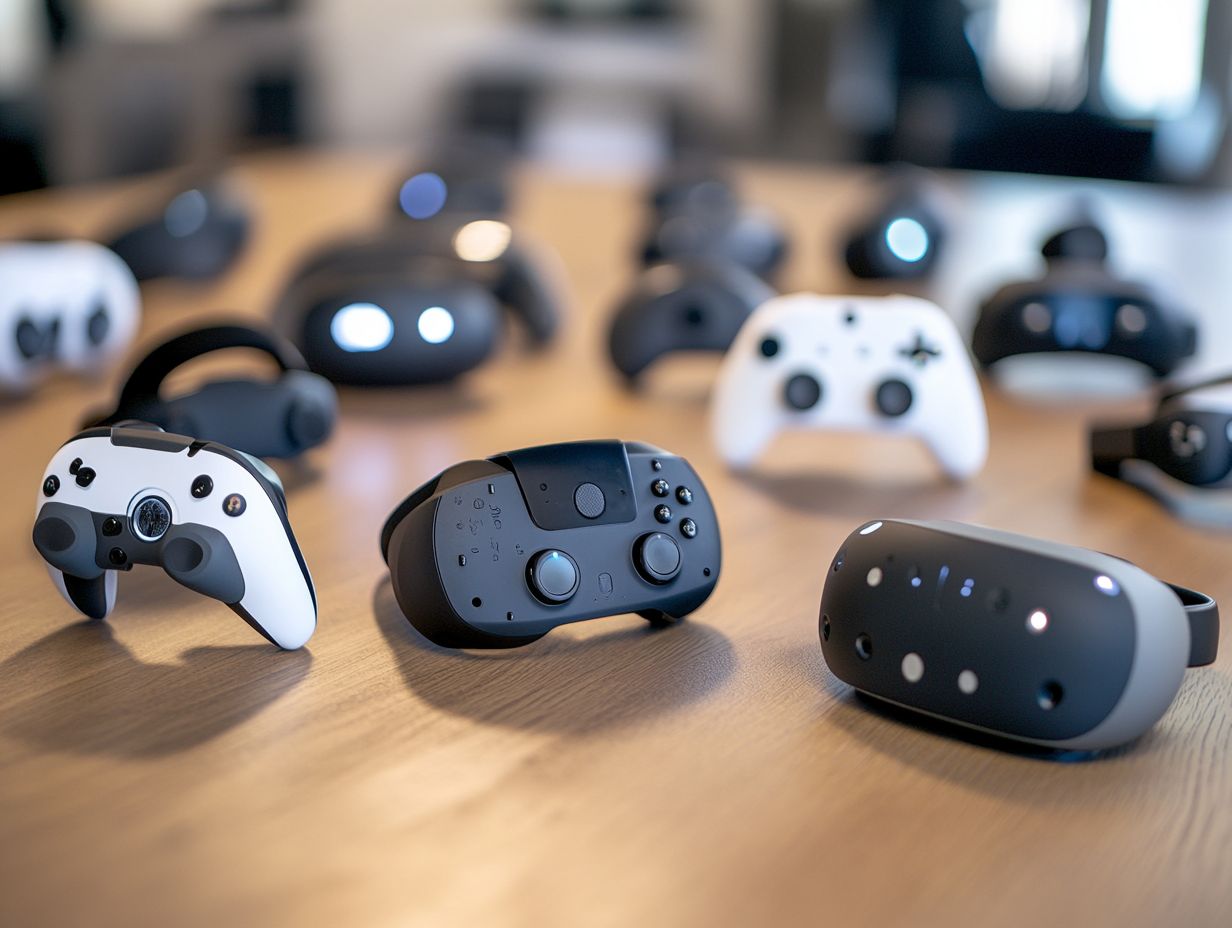
When choosing VR controllers, weigh the pros and cons of wired and wireless options. Each brings distinct advantages to different gaming setups.
Wireless controllers offer the freedom to move without being tethered. However, they can sometimes let you down with battery life and connectivity issues, which isn t ideal during intense gaming marathons.
Wired controllers connect directly to your device, delivering minimal latency and an uninterrupted power supply essential for serious competitive gaming. However, they can restrict your movement and create a tangled mess of cables.
It s vital to consider factors like device compatibility, as some gaming systems might lean towards one option over the other. This will ultimately affect your overall experience and satisfaction.
How to Use VR Controllers
Mastering the use of VR controllers is vital for elevating your immersive experience in Virtual Reality. Start by getting familiar with navigation menus, button functions, and unique features of your controllers that enhance interactions with virtual objects.
As you gain confidence with these controls, you’ll unlock advanced capabilities like gesture recognition, allowing you to delve even deeper into the captivating realm of virtual reality.
Basic operations and navigation with VR controllers require understanding the functions of various buttons and using navigation menus effectively. Familiarize yourself with the layout of buttons and triggers to perform actions like selecting items and moving through menus smoothly.
This foundational knowledge is crucial, as each button often has multiple functions depending on the context whether launching a quick menu or executing a specific action in a game.
To elevate your experience, practice with gesture controls and voice commands. These can introduce an additional layer of interaction. Being aware of certain shortcuts can significantly lessen the learning curve, giving you quicker access to tools and features within the VR space.
As you build your confidence with the controller, you’ll be ready to explore more complex functionalities, unlocking greater creativity and engagement in the virtual world.
Advanced Functions and Tips
VR controllers have advanced functions that open up exciting interaction possibilities. You can engage with virtual environments in new and innovative ways.
Features like gesture recognition and customizable button layouts create stronger connections with the game. Haptic feedback, which provides physical sensations like vibrations, enhances your immersive experience.
These controllers often include motion tracking, allowing your movements to replicate real-life actions with precision. This fluidity amplifies the realism of your gaming experience and enables intuitive interactions, such as picking up objects or completing intricate tasks.
Dive into the settings and experiment with features that feel comfortable and responsive for you. Engaging in user forums can offer valuable insights into optimal configurations and techniques, ultimately transforming the way you immerse yourself in VR worlds.
Choosing the Right VR Controllers for You
Selecting the right VR controllers is essential for elevating your Virtual Reality experience. Consider factors like comfort, functionality, and compatibility with your gaming setup.
Look at your specific VR system, the lifespan of the controller, and any advanced features that may enhance your gameplay. By conducting a thorough comparison of available options, you can confidently choose the controller that best aligns with your needs, enriching your immersive adventure.
Consideraciones y Comparaci n
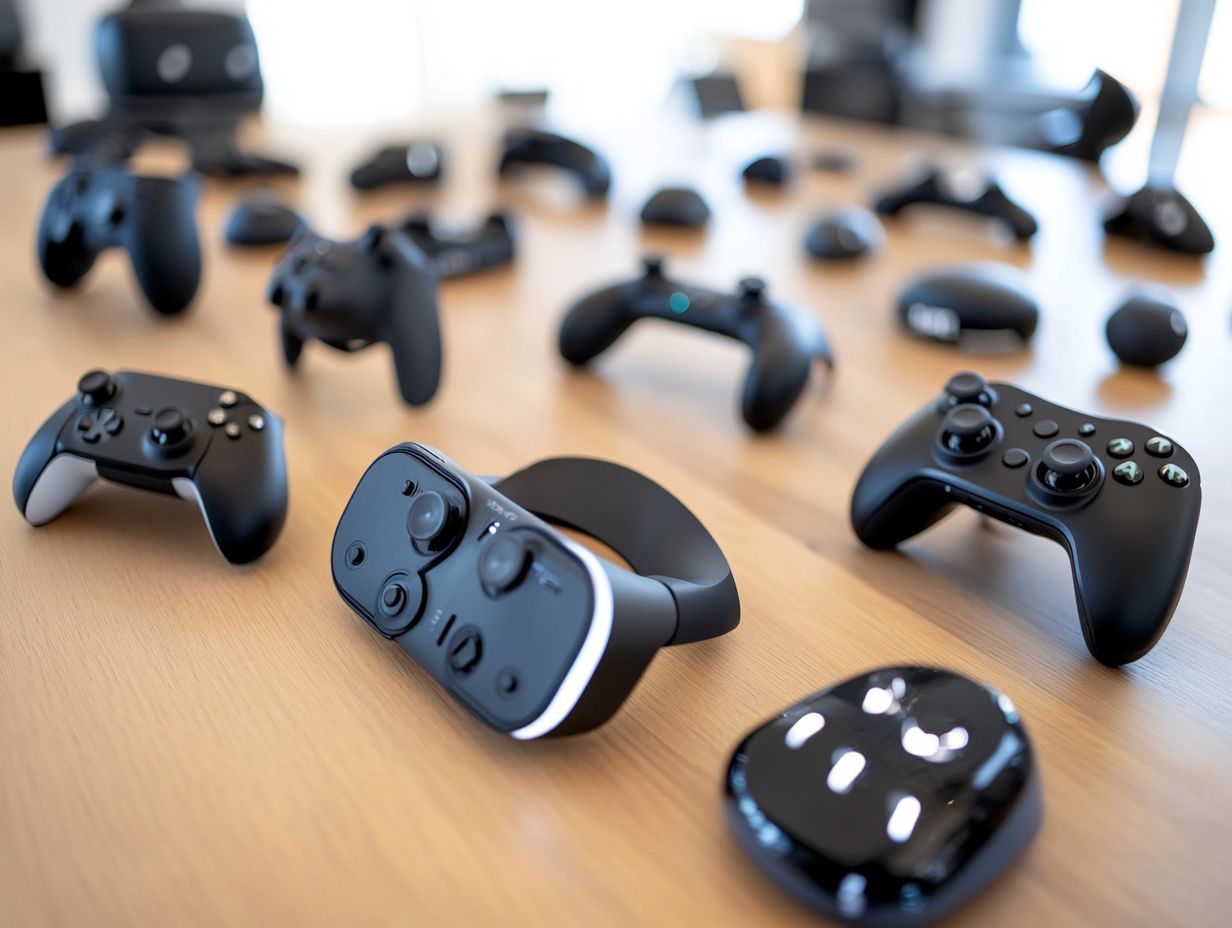
When diving into the world of VR controllers, it s crucial to compare options based on ergonomic design, advanced functionality, and user comfort.
Each controller comes with unique features tailored to different gaming styles think haptic feedback for realistic interactions or customizable button layouts to boost usability.
By weighing these factors, you can make an informed decision that significantly enhances your immersive experience in Virtual Reality.
Pay particular attention to the weight and grip of the controller, as these elements are vital for comfort during extended gaming sessions. A controller that s too heavy can lead to fatigue, while one designed with a comfortable grip allows for longer play without strain.
Functionality matters too; aspects like motion tracking accuracy and battery life greatly affect how effortlessly you navigate virtual worlds.
By considering these factors, you can choose a controller that aligns with your gaming preferences and elevates your overall VR adventures, making every interaction more engaging and immersive.
Frequently Asked Questions
What are VR controllers?
VR controllers are handheld devices for interacting with virtual environments. They include buttons and joysticks to navigate and manipulate objects in these worlds.
What types of VR controllers are there?
There are several types of VR controllers, including handheld controllers, motion-tracked controllers, and gesture controllers. Each type offers a unique way to interact with VR environments, and different VR systems may use various types of controllers.
How do I use VR controllers?
The specific controls and functionalities may vary depending on the type and system. Generally, you can grip the controllers and use the buttons, triggers, and joysticks to navigate and interact with objects in the virtual world. It may take some practice to get used to using VR controllers effectively.
Do all VR systems come with controllers?
No, not all VR systems come with controllers. Some may require users to purchase specific controllers, while others may offer a variety of options. Before purchasing a VR system, research the type of controllers it uses and whether they are included or need to be purchased separately.
Can VR controllers be used for other purposes?
Yes, VR controllers can sometimes be used for other purposes besides interacting with VR environments. Some systems may have additional features, such as using the controllers as motion-tracked input devices for gaming or as a remote for controlling media.
Are there any safety precautions to keep in mind when using VR controllers?
Absolutely! Follow these safety guidelines to enhance your VR experience.
First, make sure you have enough space to move around safely. Clear any obstacles that could pose a hazard.
Remember to take breaks often to avoid getting too tired while using your VR controllers.




